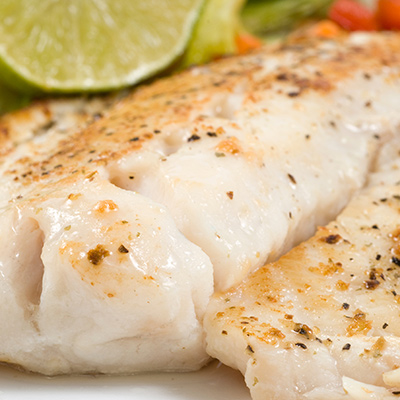All About Sturgeon

There are close to 25 species of sturgeon, several of which can be found in the lakes and rivers of Canada.
An ancient fish, it is estimated to have been on the planet for hundreds of thousands of years.
Characteristics
Having no scales, the sturgeon is covered by 5 rows of bony plates which give it a prehistoric appearance.
The sturgeon is a quality catch not only for its delicious, fatty, white flesh, but also for its caviar, an expensive gastronomic delicacy prized all over the world. Only the eggs of the sturgeon can be called caviar.
Culinary tips and advice
The sturgeon's firm, dense flesh is ideal for preparing brochettes on the barbecue. Smoked sturgeon with a few drops of lemon juice is another true delicacy.
Sturgeon can be cooked the same way as swordfish or tuna–poached, roasted, steamed, cooked in a sauce or served cold.
Availability
You will find fresh or flash-frozen sturgeon fillets and smoked sturgeon, year-round, at your Metro fishmonger's counter.
Nutritional value
The sturgeon is a fatty fish. For the weight conscious, steaming, poaching or cooking in parchment would be the wisest choice.
The sturgeon is an excellent source of vitamins A, B6, B12 and niacin. It is also rich in phosphorus, potassium, calcium and selenium.
Storage life
Fresh sturgeon should be cooked as soon as possible after purchase.
| Refrigerator 4° C (40° F) | Freezer -18° C (-4° F) | |
| Fresh sturgeon | 2 to 3 days | 4 to 6 months |
| Cooked sturgeon | 1 to 2 days | ------ |













